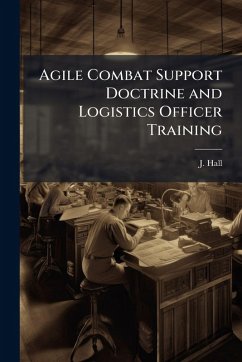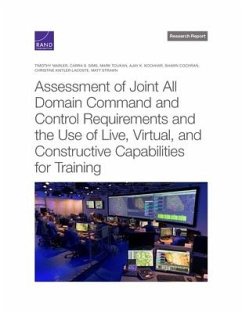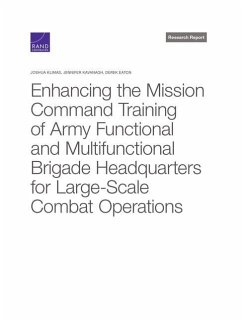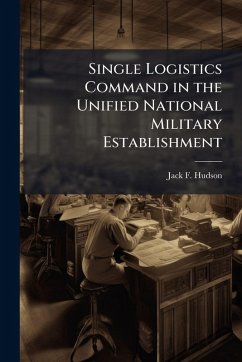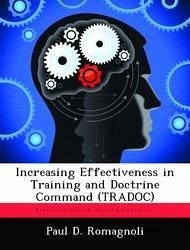
Increasing Effectiveness in Training and Doctrine Command (TRADOC)
Versandkostenfrei!
Versandfertig in über 4 Wochen
15,99 €
inkl. MwSt.

PAYBACK Punkte
8 °P sammeln!
TRADOC is a relevant and essential organization in today's Army. No other organization performs the functions that TRADOC accomplishes. Unfortunately, TRADOC is not operating as effective as it could be. Its process lines, or lines of command and control, are not firmly established. Additionally, TRADOC has a staff structure that is unlike any other structure in the Department of Defense. These seemingly unassuming criticisms hinder effective horizontal and vertical integration within TRADOC and throughout the rest of the Army and Department of Defense. As well as providing recommended solutio...
TRADOC is a relevant and essential organization in today's Army. No other organization performs the functions that TRADOC accomplishes. Unfortunately, TRADOC is not operating as effective as it could be. Its process lines, or lines of command and control, are not firmly established. Additionally, TRADOC has a staff structure that is unlike any other structure in the Department of Defense. These seemingly unassuming criticisms hinder effective horizontal and vertical integration within TRADOC and throughout the rest of the Army and Department of Defense. As well as providing recommended solutions, this monograph carries it one-step further by explaining how to implement the recommendations as well. Having a solution without a viable plan to implement them may prove the recommendations as unfeasible. This is accomplished by exploring the history of TRADOC and the challenges in its development, then applying those lessons learned to the recommended solutions. The Parker Panel, Reorganization of 1972, and Operations Steadfast are summarized. Exploring the history of TRADOC also provides an explanation of why TRADOC has the mission and functions that it is charged with today. In establishing depth of analysis, TRADOC's current mission and functions will be derived from essential federal documents and regulations. The theoretical underpinnings are explained by using Frederick Taylor's Principles of Scientific Management and TRADOC's current major subordinate command and staff structures are dissected in order to describe process lines. Analyzing these aspects provides an explanation of the complexity of TRADOC's mission and functions along with the major subordinate command and staff structures to accomplish those functions and the ineffectiveness that has resulted. To overcome the current ineffectiveness, it is recommended that TRADOC establishes clear lines of command and control and changes the current staff structure to the structure of a G-staff. Establishing clear This work has been selected by scholars as being culturally important, and is part of the knowledge base of civilization as we know it. This work was reproduced from the original artifact, and remains as true to the original work as possible. Therefore, you will see the original copyright references, library stamps (as most of these works have been housed in our most important libraries around the world), and other notations in the work. This work is in the public domain in the United States of America, and possibly other nations. Within the United States, you may freely copy and distribute this work, as no entity (individual or corporate) has a copyright on the body of the work. As a reproduction of a historical artifact, this work may contain missing or blurred pages, poor pictures, errant marks, etc. Scholars believe, and we concur, that this work is important enough to be preserved, reproduced, and made generally available to the public. We appreciate your support of the preservation process, and thank you for being an important part of keeping this knowledge alive and relevant.





